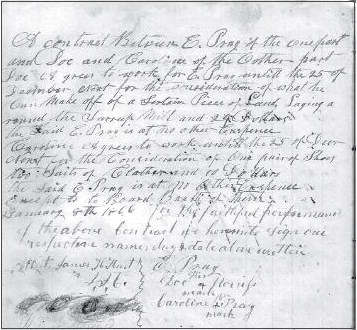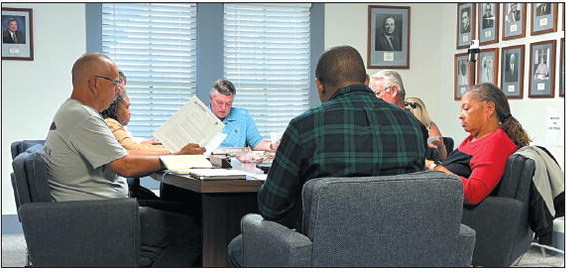Black History Month


What a journey. In January of 1866 a single, twenty-one year old former slave named Dock Morris entered into an agreement with Ephraim Pray to work until December of that year for “everything he can make off a certain piece of land lying around the syrup mill and twenty-four dollars.” In that year it was real money; gold coin.
Pray also agreed to “board” Dock, providing a place to live and meals.
The original contract is on display at the Douglas County Museum of History and Art.
My search through Black History is an ongoing project.
I’m curious how being born a slave affected people and what their lives were like after 1865. For many, freedom brought opportunity and the ability to own land.
Several Morris males are listed among “employed freedmen” living and working in the same community in 1871 and beyond. Among them are Jack, Henry, Luke and Dock Morris.
The connection was likely Christopher Morris who owned several slaves, according to the slave census of 1850 and 1860.
October 24, 1973, Dock married Jane Menifield in Douglas County, Georgia.
In 1875 Dock was one of four males with the last name of Morris who were employed by their former slave-owner near Fairplay in Douglas County, Georgia.
In 1880 Dock and Jane rented land on what was known as the Villa Rica – Whitesburg Road, now called Dukes Road. Their white neighbors were Tom and Frances Stovall, Ben and Millie Watkins. In the 1900 Census, the Morris family lived in another Fairplay community in Morgan County, Georgia. Jane reported having given birth to twelve children with ten living at that time. The Fairplay community was a long-time base of African- American life and education.
Of the children or stepchildren listed by various census reports, I was able to track down many of them. Two lived out their adult lives and died in Detroit, Michigan, and two lived in Chattanooga.
In 1910, a few of Dock’s children were living nearby.
Dock, Jr., and his wife, Amy, as well as continued from page
James and Philip owned and worked adjacent farms.
Three years later Dock Morris died and was buried in Chestnut Grove Cemetery.
His monument reveals a life well lived. His stone is noticeable and reveals he was a member of the local Prince Hall Masonic Lodge.
By the census of 1930, James and his family moved to Chattanooga, where he worked as a chauffeur for a wealthy family and owned a home valued at over $3,000.00.
Two years later his mother, Jane, died and was buried in Pleasant Gardens Cemetery, and in 1960 James joined her.
There are other names I am tracking; Endsley, Camp, Austell, Metz, Buttrum, Kimpson.
Meanwhile, there is enough to keep you immersed in Black History at the Douglas County Museum of History and Art.
joenphillips@yahoo.com

By Joe Phillips Dear Me







NITTY GRITTY
Posted on